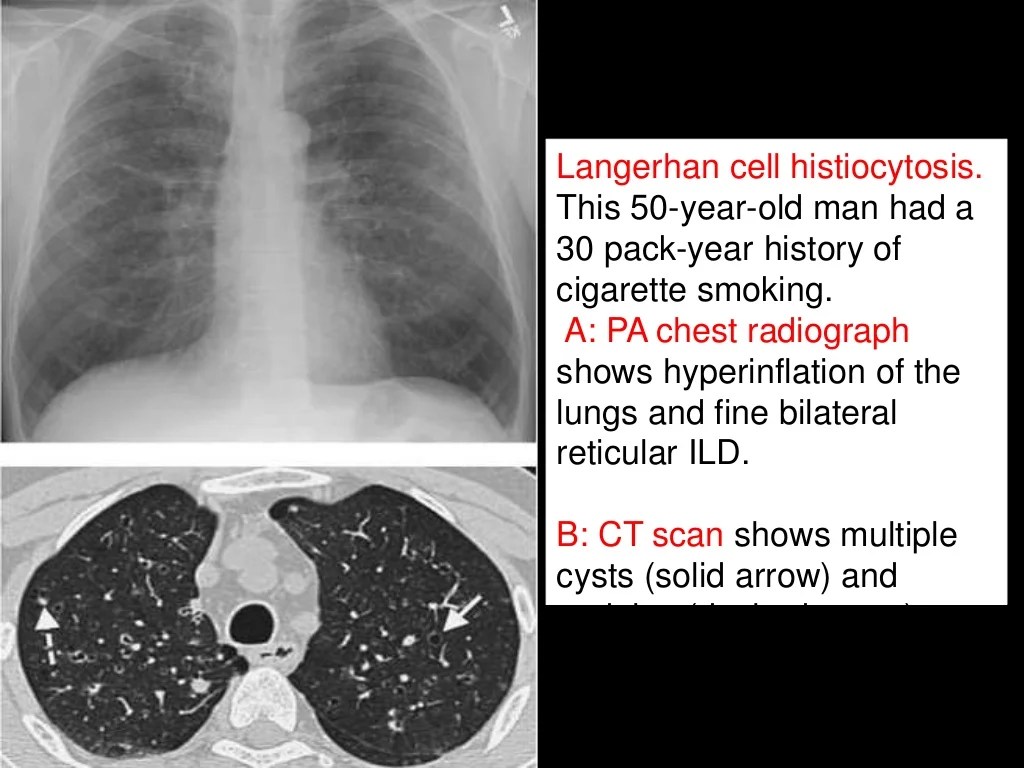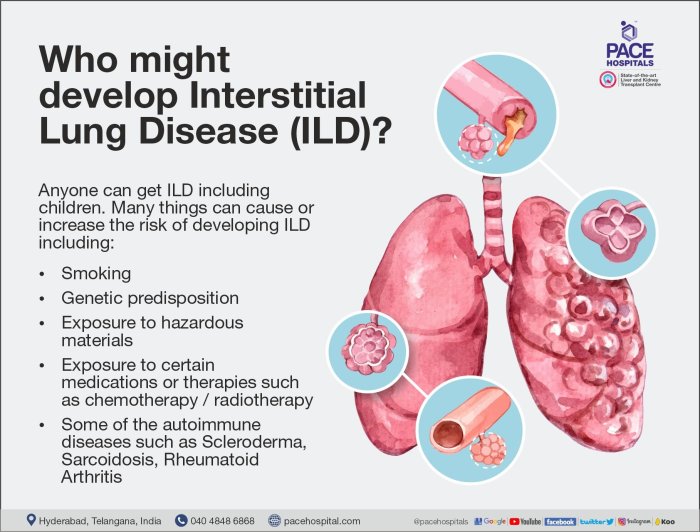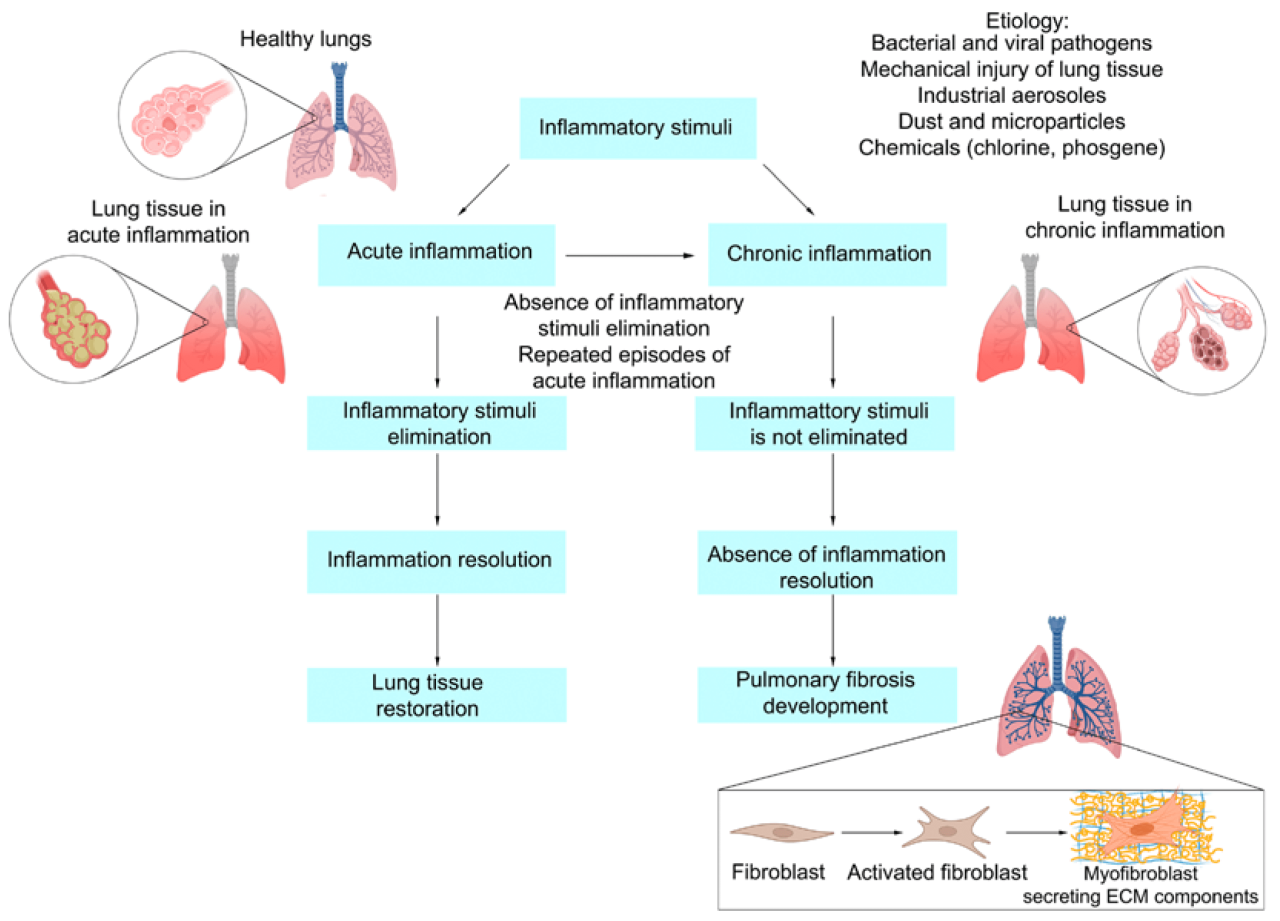Parenchymal lung disease, a complex array of conditions affecting the delicate lung tissue, takes center stage in this insightful exploration. As we delve into its intricacies, we uncover the causes, symptoms, and management strategies that shape the journey of individuals living with this condition.
Parenchymal lung diseases encompass a spectrum of ailments, ranging from interstitial lung diseases to pulmonary fibrosis. Understanding their diverse nature and impact on lung function is crucial for effective diagnosis and treatment.
Causes and Risk Factors: Parenchymal Lung Disease

Parenchymal lung diseases are caused by a variety of factors, including environmental exposures, smoking, and autoimmune disorders. Environmental exposures to certain pollutants, such as silica dust, asbestos, and certain chemicals, can increase the risk of developing parenchymal lung diseases. Smoking is a major risk factor for many types of parenchymal lung diseases, including chronic obstructive pulmonary disease (COPD) and lung cancer.
Autoimmune disorders, such as rheumatoid arthritis and lupus, can also increase the risk of developing parenchymal lung diseases.
Risk Factors
In addition to the causes listed above, certain risk factors can increase the likelihood of developing parenchymal lung diseases. These risk factors include:
Age
The risk of developing parenchymal lung diseases increases with age.
Genetics
Some people are more likely to develop parenchymal lung diseases due to their genetic makeup.
Certain occupations
People who work in certain occupations, such as mining, construction, and agriculture, are at increased risk of developing parenchymal lung diseases due to exposure to hazardous substances.
Symptoms and Diagnosis

Parenchymal lung diseases manifest a range of symptoms that vary depending on the severity and type of the underlying condition. Understanding these symptoms is crucial for early detection and timely diagnosis.
The most common symptom is shortness of breath, which may worsen with exertion or when lying down. Persistent coughing, often producing mucus, is another prevalent symptom. Fatigue, weakness, and a general feeling of malaise are also frequently reported.
Diagnostic Methods, Parenchymal lung disease
Diagnosing parenchymal lung diseases involves a combination of physical exams, imaging tests, and lung function tests. During a physical exam, the doctor listens to the patient’s breathing sounds using a stethoscope, checks for wheezing or crackling sounds, and assesses the chest for any abnormalities.
Imaging tests, such as X-rays, CT scans, and MRI scans, provide detailed images of the lungs and can help identify abnormalities in the lung tissue, such as inflammation, scarring, or tumors. Lung function tests measure the amount of air a person can inhale and exhale, as well as the rate of airflow, to assess lung function and identify any impairments.
Prognosis and Outlook

The prognosis of parenchymal lung diseases depends on various factors, including the type of disease, its severity, and the response to treatment. In general, early diagnosis and treatment can improve the prognosis and prevent complications.
Some parenchymal lung diseases, such as interstitial pneumonia, can be progressive and lead to respiratory failure if left untreated. Respiratory failure occurs when the lungs are unable to provide enough oxygen to the body. In severe cases, lung transplantation may be necessary to replace the damaged lungs.
Complications and Long-Term Effects
Parenchymal lung diseases can also lead to other complications, such as:
- Pulmonary hypertension: High blood pressure in the arteries of the lungs
- Cor pulmonale: Enlargement of the right side of the heart due to pulmonary hypertension
- Chronic respiratory failure: Long-term inability of the lungs to provide enough oxygen to the body
- Lung cancer: Parenchymal lung diseases, such as idiopathic pulmonary fibrosis, can increase the risk of lung cancer
Prevention and Health Promotion
Preventing parenchymal lung diseases is crucial for maintaining respiratory health and reducing the risk of developing these conditions. By adopting healthy lifestyle choices and promoting lung health, individuals can significantly lower their chances of developing parenchymal lung diseases.
One of the most effective ways to prevent parenchymal lung diseases is to avoid smoking. Smoking cigarettes or exposure to secondhand smoke can damage the delicate tissues of the lungs, leading to inflammation and scarring. Quitting smoking or avoiding exposure to smoke is essential for protecting lung health.
Reducing Exposure to Air Pollution
Air pollution, particularly particulate matter and ozone, can contribute to the development of parenchymal lung diseases. Reducing exposure to air pollution is crucial for maintaining lung health. This can be achieved by:
- Checking air quality forecasts and limiting outdoor activities when pollution levels are high.
- Using air purifiers indoors to reduce indoor air pollution.
- Advocating for policies that reduce air pollution, such as promoting clean energy and reducing emissions from vehicles and industries.
Regular Exercise
Regular exercise is not only beneficial for overall health but also for lung health. Physical activity helps strengthen the respiratory muscles, improve lung function, and increase oxygen uptake. Aim for at least 150 minutes of moderate-intensity exercise or 75 minutes of vigorous-intensity exercise per week.
Epilogue
Parenchymal lung disease presents a multifaceted challenge, requiring a comprehensive approach to management. Early detection, personalized treatment plans, and ongoing monitoring are essential for preserving lung health and improving outcomes. By unraveling the complexities of this condition, we empower individuals to navigate their journey with knowledge and support.
Q&A
What are the common symptoms of parenchymal lung disease?
Shortness of breath, persistent cough, fatigue, and wheezing are common symptoms.
What are the risk factors for developing parenchymal lung disease?
Smoking, exposure to air pollution, certain occupations, and autoimmune disorders increase the risk.
How is parenchymal lung disease diagnosed?
Physical exams, imaging tests (X-rays, CT scans), and lung function tests aid in diagnosis.